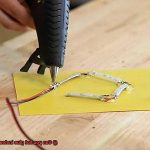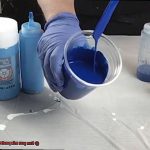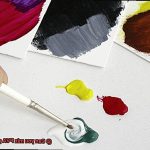Are you a creative soul who loves to push the boundaries and experiment with different mediums and techniques in your artwork? Maybe you’re eyeing that bottle of Elmer’s glue and some acrylic paints, wondering if they can be mixed for your next masterpiece. Well, wonder no more.
Mixing Elmer’s glue with acrylic paint has become quite the trend lately. Artists and crafters alike are testing out the limits of these two materials. But before you dive headfirst into this mixology adventure, there are a few things to consider.
So, can you mix Elmer’s glue with acrylic paint? The answer is a resounding yes. However, it’s important to understand the chemical properties of both materials and how to properly mix them to achieve your desired results.
In this blog post, we’ll take a deep dive into the world of Elmer’s glue and acrylic paint. We’ll explore the benefits and challenges of mixing them, discuss techniques for achieving different effects, and share tips on how to best use this mixture in your artwork.
By the end of this post, you’ll have all the information you need to decide if mixing Elmer’s glue with acrylic paint is right for your creative needs. So grab your apron (or old shirt), some brushes, and let’s get started.
Benefits of Mixing Elmer’s Glue and Acrylic Paint
Contents
- 1 Benefits of Mixing Elmer’s Glue and Acrylic Paint
- 2 How to Mix Elmer’s Glue and Acrylic Paint?
- 3 Important Considerations Before Mixing Elmer’s Glue and Acrylic Paint
- 4 Different Uses of the Mixture of Elmer’s Glue and Acrylic Paint
- 5 Common Mistakes When Mixing Elmer’s Glue and Acrylic Paint
- 6 Tips for Avoiding Mistakes When Mixing Elmer’s Glue and Acrylic Paint
- 7 Examples of Projects Using the Mixture of Elmer’s Glue and Acrylic Paint
- 8 Alternatives to Using the Mixture of Elmer’s Glue and Acrylic Paint
- 9 Conclusion
Look no further than the simple combination of Elmer’s glue and acrylic paint. By mixing these two materials, you can achieve a range of benefits that will take your art to the next level.
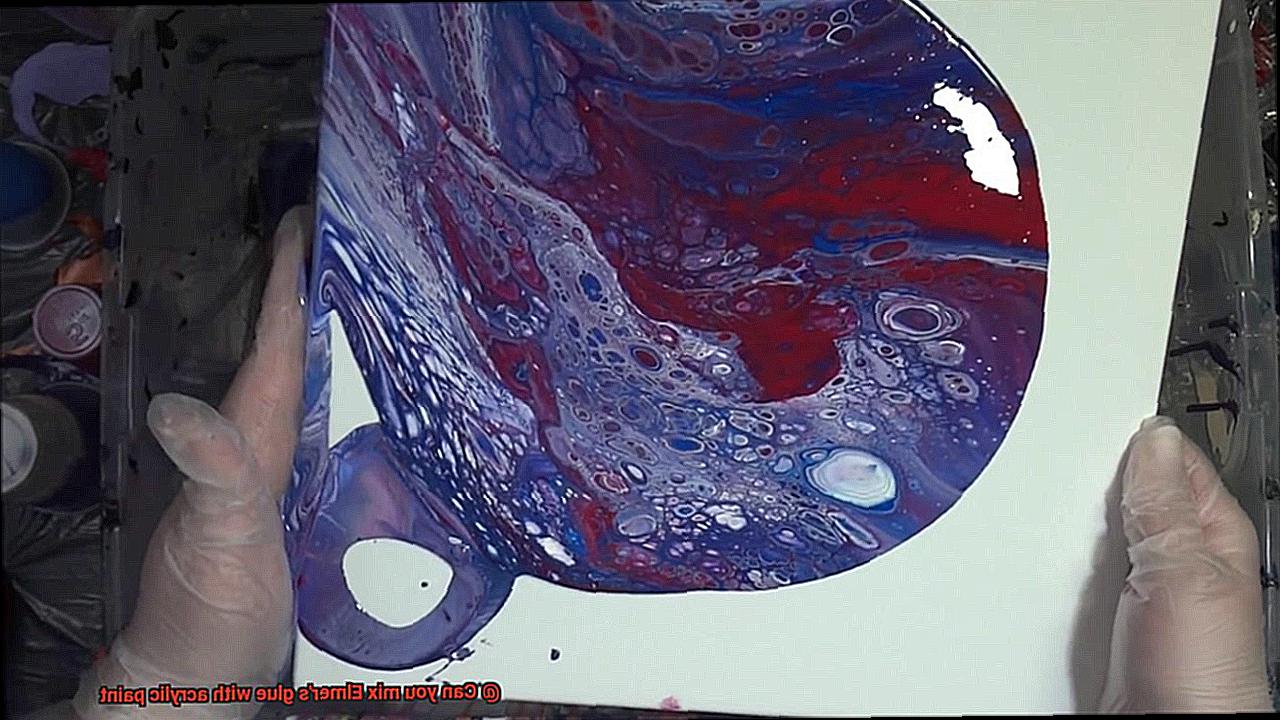
First and foremost, mixing Elmer’s glue with acrylic paint improves the adhesion of the paint to surfaces such as paper, cardboard, and wood. The glue acts as a binding agent, creating a stronger bond between the paint and the surface. This is especially useful for mixed media pieces or collages.
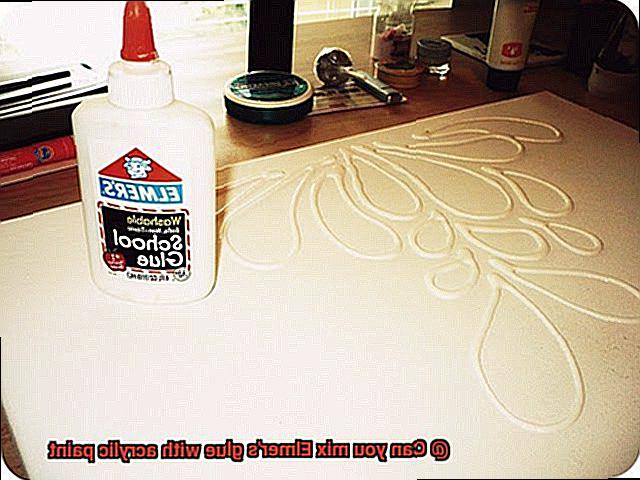
But the benefits don’t stop there. Adding Elmer’s glue to acrylic paint also creates a textured surface that can give your artwork a three-dimensional effect. This technique is perfect for creating pieces with depth and interest.
Another advantage of mixing these two materials is that it extends the drying time of the paint. This can be particularly helpful if you need more time to work on your piece or want to blend colors together more easily. It also prevents the paint from drying too quickly and cracking or flaking off.

Finally, perhaps one of the most significant benefits of mixing Elmer’s glue with acrylic paint is its cost-effectiveness. Compared to other binding agents like gesso, Elmer’s glue is relatively inexpensive. Using it in combination with acrylic paint can be an affordable way to create textured and adhesive surfaces without breaking the bank.
To achieve these benefits effectively, there are some tips you should keep in mind. Start small when mixing Elmer’s glue with acrylic paint, gradually adding more until you achieve the desired consistency. Stir thoroughly to ensure a smooth, consistent mixture. Test on a small scale before applying it to a larger project to ensure that it achieves the desired effect. And finally, control the ratio of glue to paint carefully to avoid unwanted results.
How to Mix Elmer’s Glue and Acrylic Paint?
Are you looking for a new way to add texture and depth to your artwork? Mixing Elmer’s glue with acrylic paint might be just the technique you need. In this guide, we’ll explore everything you need to know about mixing these materials to achieve beautiful and unique effects in your artwork.
Proportions:
The key to successfully mixing Elmer’s glue and acrylic paint is using the right proportions. While a 1:1 ratio of glue to paint is a good starting point, the proportions can vary depending on the desired effect you want to achieve. If you want a thicker consistency, you can add more glue to the mixture. If you want a more transparent effect, you can add more paint.
Mixing:
Once you have the right proportions, it’s time to mix the two ingredients thoroughly. Using a stir stick or palette knife, make sure to mix until the glue and paint are fully combined.
It’s important to note that Elmer’s glue dries clear, so the color of the mixture will appear lighter than expected when wet.
Application:
Now that your mixture is ready, it’s time to apply it to your chosen surface. However, before applying it to your entire project, it’s crucial to test the mixture on a small area first. This will help ensure that the mixture is durable enough for your project and avoid unwanted results.
Paint Consistency:
When mixing Elmer’s glue and acrylic paint, it’s best to use a medium-bodied paint.
This consistency allows for easy mixing and painting while retaining the texture of the glue. Heavy-bodied paints may not mix as well and can create lumps or clumps in the mixture.
Durability:
While this technique can create beautiful effects in your artwork, it’s important to note that the resulting mixture may not be as durable or long-lasting compared to using other binding agents such as gesso or medium. Keep this in mind when deciding whether to use this technique for your project.
Conclusion:
Important Considerations Before Mixing Elmer’s Glue and Acrylic Paint
If you’re looking to add some texture and depth to your artwork, mixing Elmer’s glue with acrylic paint can be a fun and creative way to achieve beautiful effects. However, before you dive in, it’s important to keep in mind a few important considerations.
First and foremost, it’s essential to understand the purpose of mixing these two materials. While Elmer’s glue is a popular adhesive used for various crafting projects, acrylic paint is commonly used in art projects. Combining the two can create a unique mixture that offers both adhesive properties and a pop of color.
But how much of each material should you use? It’s crucial to find the perfect balance. Too much glue can result in a sticky and unstable mixture, while too much paint can result in a diluted and less adhesive mixture. For best results, use a 1:1 ratio of glue to paint.
Choosing the right type of glue is also important. Elmer’s School Glue and Elmer’s Washable No-Run School Glue are both great options for mixing with acrylic paint. However, steer clear of Elmer’s Carpenter’s Wood Glue or Elmer’s Tacky Glue for this purpose.
The surface on which you’ll be applying the mixture is another factor to consider. If you’re using a porous surface such as paper or fabric, adding additional water to the mixture can prevent it from becoming too thick and difficult to apply.
Lastly, keep in mind that mixing Elmer’s glue with acrylic paint may affect drying time. The mixture may take longer to dry than either material would on its own, so make sure to allow ample drying time before handling or manipulating your project.
In summary:
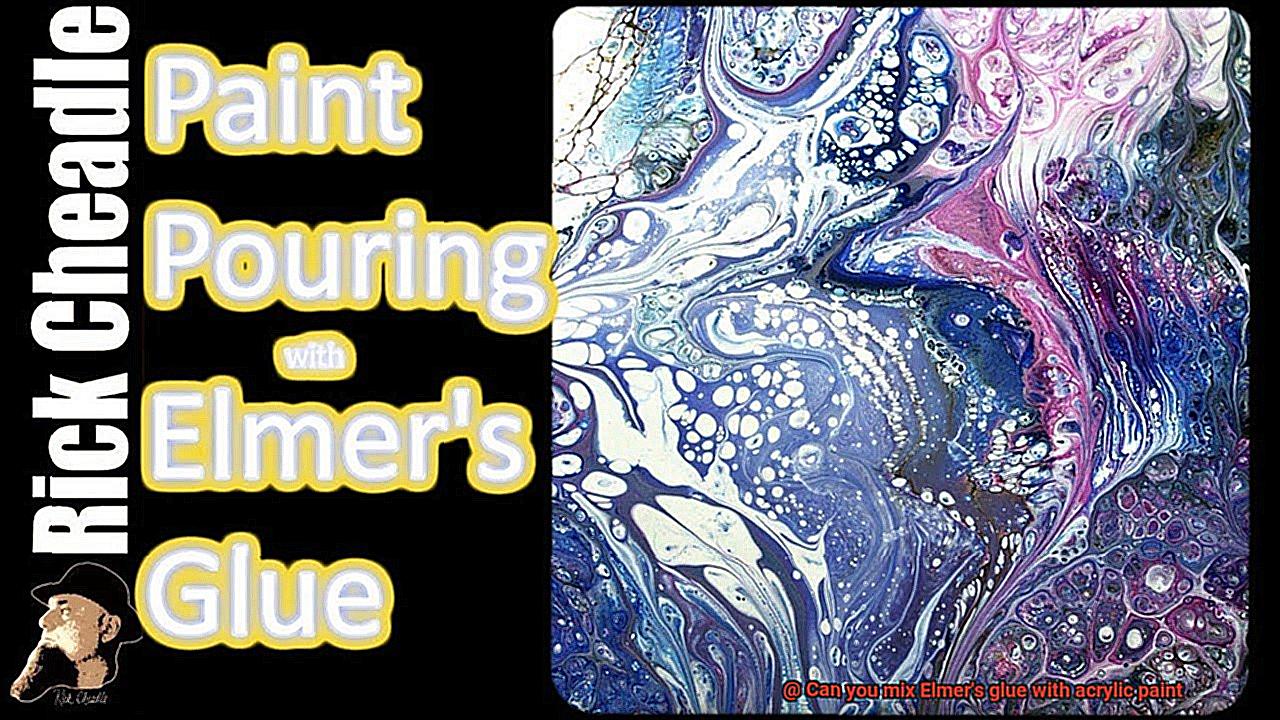
- Understand the purpose of the mixture
- Use a 1:1 ratio of glue to paint
- Choose the appropriate type of glue
- Adjust for porous surfaces if necessary
- Allow ample drying time
Different Uses of the Mixture of Elmer’s Glue and Acrylic Paint
As an expert in this topic, I can tell you that this combination has a vast array of uses in the world of art.
First and foremost, this mixture is perfect for creating a flawless base coat for painting on canvas or paper. When you mix equal parts of glue and paint, you can achieve a smooth and thick consistency that provides a durable surface for subsequent layers of paint to adhere to. This is excellent for creating a sturdy foundation for your artwork.
But wait, there’s more. This mixture can also be used to add texture to your paintings. By adjusting the ratio of glue to acrylic paint, you can create different textures ranging from rough and gritty to smooth and glossy. You can apply the mixture using various tools like sponges, brushes, or even your fingers to achieve truly unique effects.
Collage artists rejoice – this mixture dries crystal clear, making it perfect for attaching various elements together without any visible adhesive marks. Use it on paper or other materials to create beautiful, transparent collages that are sure to catch everyone’s eye.
And if you’re up for a challenge, why not try using this mixture to create 3D art pieces? By adding more glue than paint, the consistency becomes thicker and more malleable, allowing you to mold it into different shapes. This is ideal for creating sculptures or other tactile art pieces that require some extra oomph.
Common Mistakes When Mixing Elmer’s Glue and Acrylic Paint
Mixing these two materials can result in stunning artwork, but beware of common mistakes that can ruin your masterpiece. As an expert in this area, I’ve gathered some research notes to help you achieve a flawless finish.
To start, it’s essential to use the correct ratio of glue and paint. Too much glue can thicken the paint and make it difficult to work with, while too little glue can cause cracking or peeling. So, ensure you measure accurately and use the right amount.
In addition to ratios, mixing is key. Don’t be tempted to mix glue and paint quickly; take your time and stir them together thoroughly. Use a separate container to avoid uneven mixtures or lumps, giving you a smooth finish that’ll make your art stand out.
Another mistake people often make is using the wrong type of Elmer’s glue. School glue may seem like a convenient option, but it can make the paint too thin or runny. It’s best to use clear-drying, all-purpose glue like Elmer’s Glue-All for mixing with acrylic paint.
Lastly, patience is key. Allow enough time for each layer to dry before applying another. Rushing this step can cause the paint to crack or peel, ruining all your hard work. Wait at least 24 hours before adding another layer or finishing touches.
Tips for Avoiding Mistakes When Mixing Elmer’s Glue and Acrylic Paint
Mixing Elmer’s glue and acrylic paint is a popular technique used by artists to create unique and textured artwork. However, beginners often make mistakes that can ruin their projects. In this blog post, we’ll explore five tips for avoiding mistakes when mixing Elmer’s glue and acrylic paint.
Tip #1: Use the Right Type of Glue
Using the right type of glue is crucial when mixing Elmer’s glue and acrylic paint. Avoid using washable glue as it can cause the pigment to separate, resulting in a grainy texture. Instead, opt for an all-purpose or school glue for best results.
Tip #2: Use the Right Amount of Glue
Finding the right balance between glue and paint is essential. Too much glue will make the mixture too thick and difficult to apply, while too little glue will result in a weak bond or flaky finish. A 50/50 ratio of glue and paint is recommended for best results.
Tip #3: Mix Thoroughly
Mixing the glue and paint thoroughly is crucial to achieve an even distribution of color and texture. Use a palette knife or stir stick to mix the two together until they are fully blended. This will help avoid any lumps or clumps in the mixture.
Tip #4: Test on a Small Surface First
Before applying the mixture to your entire project, test it on a small surface first. This will help you see how the mixture reacts and avoid any unwanted surprises or mistakes. If you’re happy with the result, then you can apply it to your entire project.
Tip #5: Apply Evenly and Thinly
It’s important to apply the mixture evenly and thinly on your surface. If you apply it too thickly, it may take longer to dry and could crack or peel over time. Applying in thin layers and allowing each layer to dry before adding more is essential for achieving a smooth finish.
Examples of Projects Using the Mixture of Elmer’s Glue and Acrylic Paint
Unlock your inner artist with the endless possibilities of mixing Elmer’s glue and acrylic paint. Whether you’re a seasoned crafter or a budding artist, this versatile mixture is sure to add texture and creativity to your projects.
One of the most popular uses for this mixture is creating homemade slime. By combining equal parts of Elmer’s glue and acrylic paint, you can create a colorful slime that’s perfect for sensory play. Plus, with the addition of borax or contact lens solution, it’s a fun and simple DIY project that both kids and adults can enjoy.
But that’s not all – this mixture can also be used to create stunning painted mason jars. The textured and durable finish on glass jars is achieved by applying the mixture with a sponge brush. You can even add additional layers of paint or embellishments to make it uniquely yours.
Mixed media artists will love the versatility of using the mixture of Elmer’s glue and acrylic paint as an adhesive for collaging paper, fabric, and other materials onto canvas or other surfaces. And for those interested in creating abstract art, applying the mixture onto a canvas using various techniques such as pouring or dripping can result in a one-of-a-kind piece full of texture and depth.
If you’re new to using this mixture, follow these five tips for success: use the right type and amount of glue, mix thoroughly, test on a small surface first, and apply evenly and thinly. With these tips in mind, you’ll be on your way to creating stunning artwork that showcases your creativity.
Alternatives to Using the Mixture of Elmer’s Glue and Acrylic Paint
Perhaps you’re seeking new techniques to expand your artistic horizons. Whatever your reason, there are several alternatives that can elevate your art to new heights.
The first alternative is clear acrylic gel medium, a versatile medium that can be mixed with acrylic paint to create a transparent layer over your artwork. This unique medium not only provides a glossy finish similar to the Elmer’s glue and acrylic paint mixture but also gives you more control over the consistency of the paint, making it easier to achieve unique effects.
Another popular alternative is Mod Podge, a well-known crafting adhesive that doubles as a sealant. Mixing Mod Podge with acrylic paint creates a glossy finish that adds a professional touch to any artwork. It’s important to note that Mod Podge may take longer to dry than the Elmer’s glue and acrylic paint mixture, so patience is key when using this alternative.
Finally, there’s clear pouring medium, specifically designed for creating fluid art. This medium offers an exceptional glossy finish without the use of glue and provides even more control over the consistency of the paint than the other alternatives mentioned above. Pouring medium is ideal for creating special effects when poured onto a surface, making it an excellent option for abstract art.
WMC05w1wn-s” >
Conclusion
In conclusion, the trend of mixing Elmer’s glue with acrylic paint has taken the art and crafting world by storm. This unique combination offers an array of benefits, including improved adhesion, extended drying time, cost-effectiveness, and the creation of one-of-a-kind textures and effects. However, it’s crucial to understand the chemical properties of both materials and use them in appropriate proportions to achieve desired results.
To avoid common mistakes when blending these materials, several steps can be taken. Firstly, ensure that you are using the right type and amount of glue for your project. Secondly, mix thoroughly to prevent clumps or separation. Thirdly, test on a small surface before applying to your final piece. Finally, apply evenly and thinly to avoid any unwanted lumps or bumps.
While mixing Elmer’s glue with acrylic paint is a popular option for artists and crafters alike, there are also alternative mediums available that can provide different effects such as clear acrylic gel medium, Mod Podge or clear pouring medium.
By following these tips and experimenting with this mixture in new ways, artists and crafters can create breathtaking artwork that showcases their individuality.




